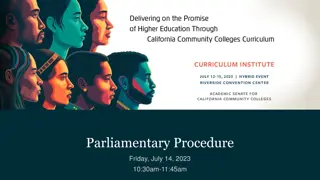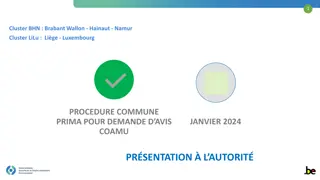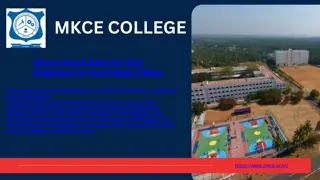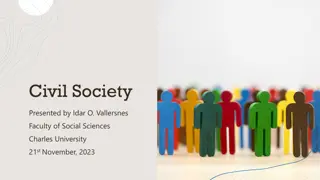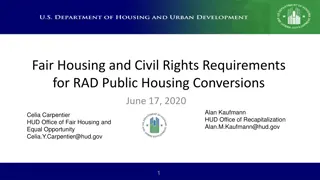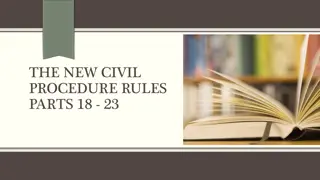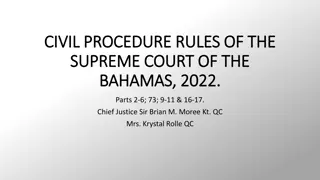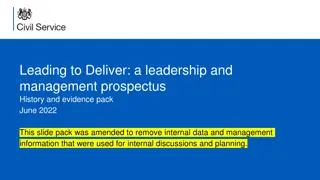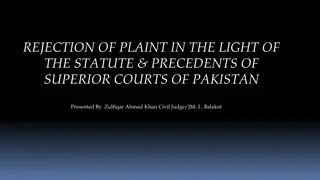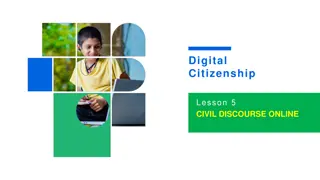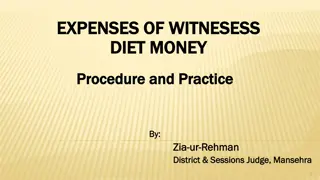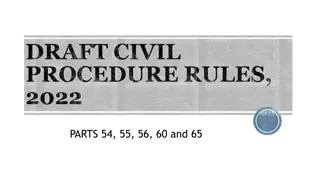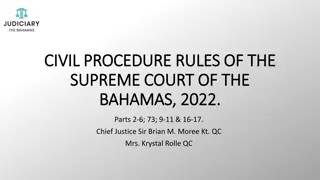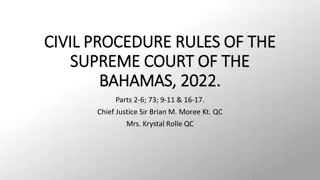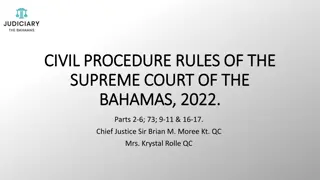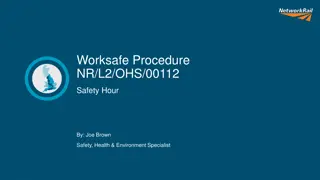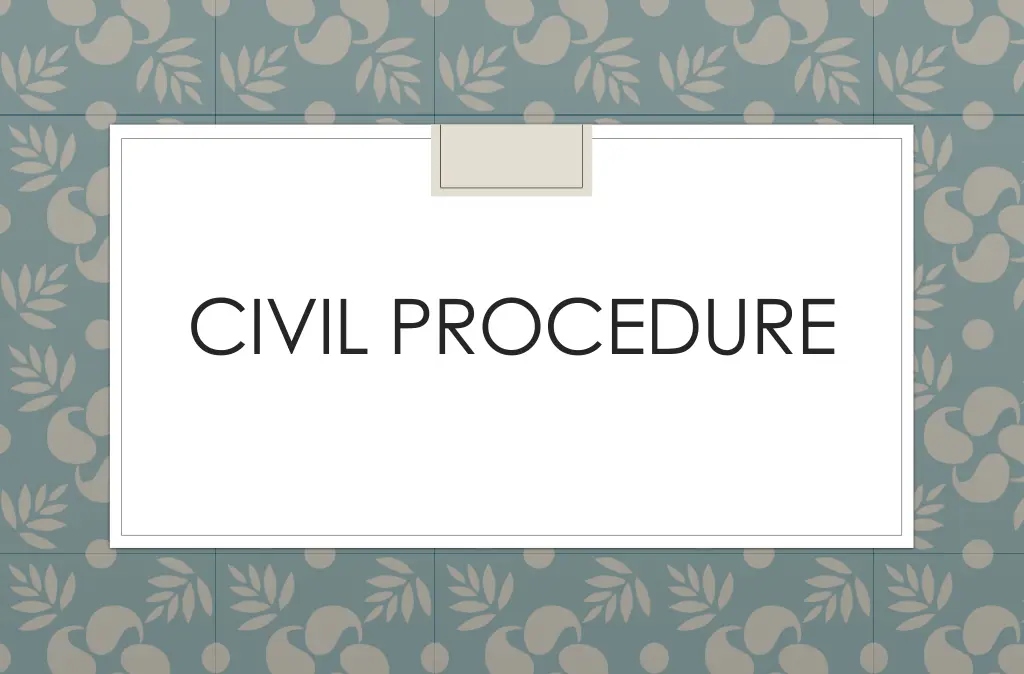
Understanding the Civil Procedure Process
Explore the civil procedure process which includes accident trial awards, evidence collection, case preparation, negotiations, trial court proceedings to prove duty, breach, and damages, verdicts, and awards of damages. Learn about the hierarchy of civil courts, courts of first instance, appeal courts, burden of proof, and the procedure leading to trial.
Download Presentation

Please find below an Image/Link to download the presentation.
The content on the website is provided AS IS for your information and personal use only. It may not be sold, licensed, or shared on other websites without obtaining consent from the author. If you encounter any issues during the download, it is possible that the publisher has removed the file from their server.
You are allowed to download the files provided on this website for personal or commercial use, subject to the condition that they are used lawfully. All files are the property of their respective owners.
The content on the website is provided AS IS for your information and personal use only. It may not be sold, licensed, or shared on other websites without obtaining consent from the author.
E N D
Presentation Transcript
The Civil Process Accident Trial Award * Evidence collected * Case prepared * Negotiations * Trial Court prove duty, breach and damage * Verdict * Award of damages
Hierarchy of Civil Courts Final Appeal Supreme Court of Justice First Appeal Court of Appeal Initial Hearing County Court High Court
Courts of First Instance This simply means that court where the case is first heard/tried County Court and High Court are both Courts of First Instance The decision for a case to go to one or the other is dependent on the track into which the case is allocated There are three tracks; Small Claims, Fast track and Multi-track
Appeal Courts The Court of Appeal and The Supreme Court of Justice are both appeal courts For an appeal to be granted it needs to be demonstrated that the judge s decision was based on a supposed error in law or fact. If it was heard by a District Judge then the appeal is usually heard by a Circuit Judge (usually for procedural matters or smaller claims) Thereafter the appeal will go to the CA unless it is a matter of great importance then it will be able to leapfrog direct to the SCJ Small sums or appeal to SCJ need leave to appeal otherwise leave is by right
Recap; Burden of Proof In civil cases the BOP is simply whether on the balance of probabilities the D is liable or not. Unless D has already been convicted of a criminal offence based on the same event (Civil Evidence Act 1968) OR Res ipsa loquitur 1. The thing that caused harm was wholly under the control of the D 2. The accident that caused the damage complained of would not have happened unless someone had been negligent 3. There is no other explanation of the injury caused to the claimant
Outline of Procedure to Trial Here are the different components in a procedure to trial can you use logic to work out what happens and in what order? 1. 2. 3. 4. 5. 6. 7. 8. 9. If negotiation do not produce settlement issue court proceedings Claims form Defendant admits or denies liability Negotiations Instruct a solicitor Letter of claim sent to defendants Joint medical expert instructed Initial investigations Valuation of case
Outline of Procedure to Trial Claims form Instruct a solicitor Initial investigations Letter of claim sent to defendants Defendant admits or denies liability Joint medical expert instructed Valuation of case Negotiations If negotiation do not produce settlement issue court proceedings
Starting a negligence case Most cases are in fact decided before court; using negotiation/mediation/arbitration or conciliation If the PI claim is for less than 50,000 it must start in County Court If over 50,000 then it will be started in the High Court Let s look at a claims form together
Key Information Name & Address (Def and Claimant) Details of Claim Value of Claim Pg 2; Particular of Claim need not be submitted at the same time up to 14 days to submit (though usually sent at the same time) Fee increases with the size of the claim; 175 as of May 2012 - unless low income or few assets where fee can be reduced or entirely removed.
Task Having bought herself a cheap windsurfer, Ursula Langer decided to teach herself to windsurf on a lake near her home. After several hours of practice, she began to tire and decide to have one last attempt at crossing the lake. She failed to notice Vera Unsworth, who was fishing from a boat on the lake. Unfortunately Ursula crashed into the boat, which capsized, and Vera lost her expensive fishing equipment in the lake. The equipment cost 2000 and the boat needed 400 worth of repairs. Vera suffered some injuries, including being cut by a fish hook which embedded itself in her cheek. She now has a permanent scar and has been advised that she is likely to be awarded 1500 in damages for her injuries. Complete the claim form regarding this case Explain to the claimant how they would proceed up to any trial
June 2012 Ryan had just collected his car from Sam s garage, where Sam had been working on the brakes. Sam told Ryan that the work was complete, but, in fact, Sam had forgotten to tighten the handbrake cable. Ryan parked his car on a hill, applied the handbrake and got out. The handbrake failed to hold the car which rolled down the hill and crushed Tanya, who was loading shopping into the back of her van. As a result of the collision, both Ryan s car and Tanya s van were slightly damaged. Tanya also suffered injuries leading to some loss of mobility which is now permanent. Therefore, she can no longer work as a self- employed courier and can no longer play sports. Tanya s loss of mobility is unusual for her type of injuries. Assuming that Sam was sued for negligence by Tanya, outline the procedure which would be followed before a trial took place. (5 marks)
Timed attempt! 5 marks = 5 minutes 14
AQA Exam Mark Scheme 15

![❤[PDF]⚡ Civil War Talks: Further Reminiscences of George S. Bernard and His Fel](/thumb/20551/pdf-civil-war-talks-further-reminiscences-of-george-s-bernard-and-his-fel.jpg)
